What’s the Difference? Natural vs. Synthetic Brushes
Get the most out of these simple tools with a short brush basics lesson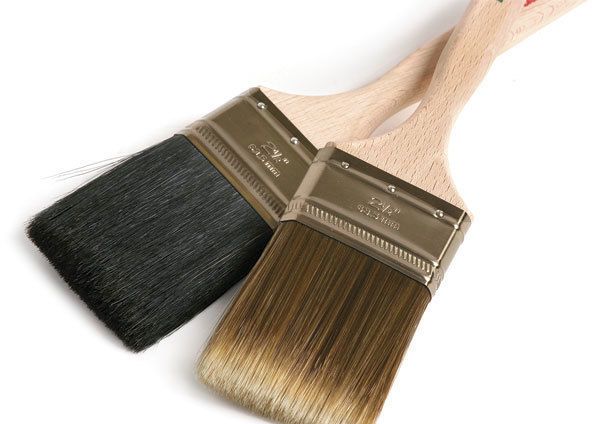
About the only finishing tool less complicated than a brush is a rag. However, there are some essential things you should know about brushes before you start on your finishing journeys.
Basically, brushes fall into two categories, natural and synthetic. Nowadays, natural-bristle brushes are made primarily from Chinese hog bristle (China bristle). Some premium brushes using skunk, ox, and badger are available, but I doubt you’ll find them at your local hardware or paint store. Natural-bristle brushes excel with solvent-based products such as oil-based varnishes and polyurethanes, shellac, and lacquer. But because they absorb water, they become limp and lose their stiffness and shape with water-based finishes.
Synthetic-bristle brushes use manmade fibers like nylon and polyester. They can handle either type of finish but are used primarily for the application of water-based products.
Profiles and shapes
The key features in a brush other than the bristle type are the profile and the amount of finish it will hold. Round, fat brushes hold more finish, while sharp, chiseled-edge brushes cut into corners and crevices better. The profile is built in during the brush-making process. The most expensive brushes usually are made by hand, and different bristle lengths, amounts, and thicknesses can be used to create brushes that have different shapes for different uses.
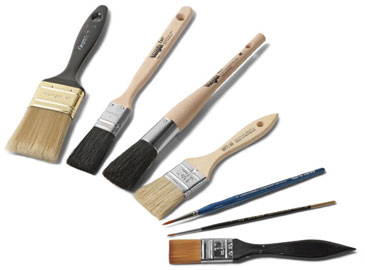
A set of brushes to handle most jobs. From left: 2-in. and 1-in. chisel-cut brushes for clear finishes, a round and a square brush for stains, artist’s brushes for detail work, and a 1-in. Taklon-bristle brush.
Basic Inventory
For clear finishes, choose good quality, rectangular, chisel-cut brushes–natural bristle for solvent-based products, synthetic for water-based. A 2–2½ -in. brush is best for large areas, while a 1-in. model is good for detail work. Expect to pay $15 to $30 for the larger sizes.
For stains and glazes, use less expensive round and square brushes–natural or synthetic, depending on the finish. The price should be $10 or less. For detail work, artists’ brushes, including a #1 and a #4, are the best choice. Good-quality synthetic-bristle models run $4 to $6 each.
You might also consider a 1-in., art-quality synthetic brush (known generically as Taklon-bristle) which costs $15 to $20. However, it can lay down a very thin topcoat of any finish with minimal brush marks.
From Fine Woodworking #192
Photos: Charles Reina
Fine Woodworking Recommended Products

Tite-Mark Marking Gauge

Dividers

Veritas Micro-Adjust Wheel Marking Gauge
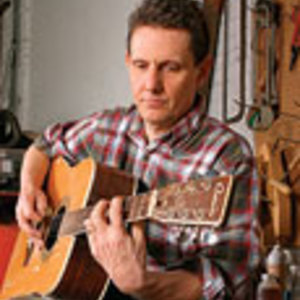



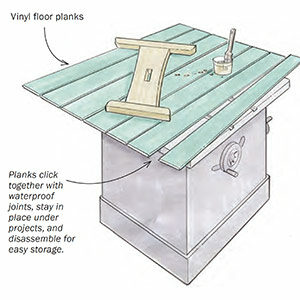
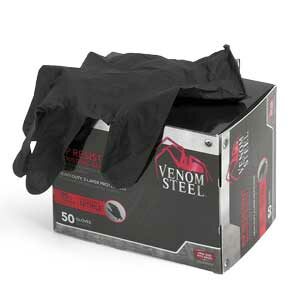
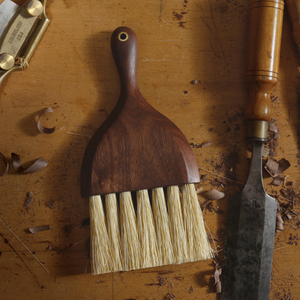
















Log in or create an account to post a comment.
Sign up Log in